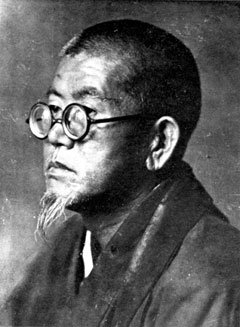To go along with today's daily Japan photo, I thought for today's Japan haiku, we would look at one that mentions higanbana.
I keep walking
the spider lilies
keep blooming
—Taneda Santoka
(Tr. Gabi Greve)
歩き続ける 彼岸花 咲き続ける
(aruki-tsuzukeru higanbana saki-tsuzukeru)

For more about higanbana, be sure to read today's photo post about the flower.
Santoka was an interesting fellow.

He was a zen monk who spent most of his life wandering all over Japan as a begging monk. He was a haiku non-comformist who disregarded the typical 5/7/5 structure. I have talked before (and I will again) how translated haiku and haiku in English don't need to follow the 5/7/5 syllable rule due to syllables (mora) in Japanese being quite different from syllables in English, but in Japan the rule is still generally followed†, making Santoka quite the haiku rebel.
He also was something of an alcoholic and wrote a lot of haiku on the topic of alcohol, such as these:
I can't give up sake;
The budding trees,
The budding grasses.
and
Drunk,
I slept
With the crickets.
and
Days I don't enjoy:
any day I don't walk,
drink sake,
and compose haiku.
Neither being a drunk, nor being a Buddhist monk was unusual for haiku poets, but Santoka's personally made him a very colorful and interesting guy. I'll leave off with one of my favorite haiku, not just by him but by anyone.
cockroach!‡
your whiskers are long
mine too
Footnotes:
†: As you may expect, there were others. Shiki, one of the 4 great Haiku Masters of Japan, was another who disliked the strict 5/7/5 structure. The movement might be translated as free-form haiku.
‡: Due to the hot, humid summers, cockroaches are unavoidable in Japan, even in the cleanest houses.
Don't miss the other great haiku in the Haiku of Japan series!
#1 - Traveling to the inn
#2 - Childless Woman
#3 - Old Dancing Butterfly
#4 - Seeing the Moon
#5 - Checking the Scarecrow
#6 - Skill of Insects
❦
 |
David LaSpina is an American photographer and translator lost in Japan, trying to capture the beauty of this country one photo at a time and searching for the perfect haiku. He blogs here and at laspina.org. |
